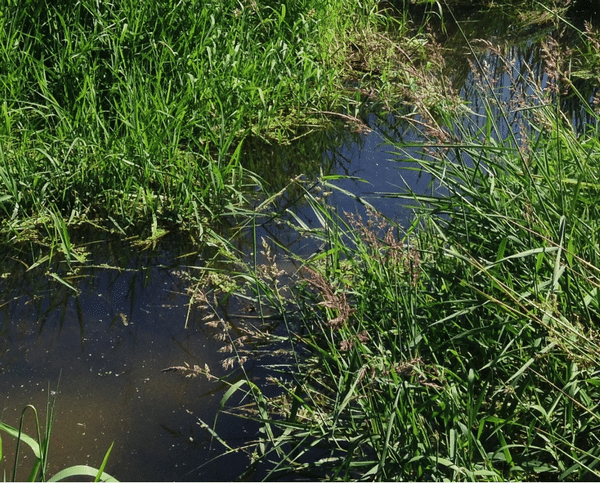
Clipper Aquatic Herbicide Ingredient – Flumioxazin Chemical Fact Sheet
Formulations Flumioxazin has been used as an agricultural chemical since 2001, and was conditionally registered for aquatic use in 2010. The active ingredient is 2-[7-fluoro-3,4-dihydro-3-oxo-4-(2-propynyl)-2H-1,4-benzoxazin-6-yl]-4,5,6,7-tetrahydro-1H-isoindole-1,3(2H)-dione. It is available in granular form (Clipper™) for control of submerged plants, and can be used as a direct foliar application to control emergent and floating-leaf plants. It also controls some filamentous algae. Aquatic Use and Considerations Flumioxazin is a broad-spectrum contact herbicide. It works by interfering with the plants’ production of chlorophyll. Treated plants will respond quickly to treatment and rapidly decompose. For larger treatments or in dense vegetation, split treatments about two weeks apart are recommended to prevent fish suffocation from low oxygen due to decaying plants.
Flumioxazin needs to be applied to young plants early in the spring as they begin to grow. It should not be used in very hard-water lakes (pH over 8.5), many of which occur in southeastern Wisconsin. Application in the early morning will increase efficacy, particularly in hard-water lakes. A water body should not be treated with flumioxazin if there is an outlet, or in moving waters such as rivers or streams. Flumioxazin controls invasive Eurasian watermilfoil (Myriophyllum spicatum) and curly-leaf pondweed (Potamogeton crispus). It may also affect desirable native species, such as coontail (Ceratophyllum demersum), duckweeds (Lemna spp.), some pondweeds (Potamogeton illinoensis, P. diversifolius, Stuckenia pectinata) and native milfoil (M. heterophyllum). Post-Treatment Water Use Restrictions There are no restrictions on swimming, eating fish from treated water bodies, or pet/livestock drinking water use.

Clipper is approved for aquatic use to control unwanted nuisance weeds
There is a five-day restriction on irrigation. Herbicide Degradation, Persistence and Trace Contaminants Flumioxazin is broken down rapidly by water and microbes. The half-life (the time it takes for half of the active ingredient to degrade) depends on the pH of the water. In low pH water (such as in northern Wisconsin) the half-life is four to five days; in high pH water (such as in southeastern Wisconsin) the half-life is a day or less. When flumioxazin degrades, it breaks down into two compounds known as APF (6-amino-7-fluoro-4-(2-propynyl)-1,4,-benzoxazin-3(2H)-one) and THPA (3,4,5,6-tetrahydrophthalic acid). Flumioxazin has a low potential for leaching and would not persist in the environment. APF and THPA do have a high potential to leach through soil and may be persistent.
Environmental Impact
Impacts on Fish and Other Aquatic Organisms Tests on bluegill and rainbow trout indicate that flumioxazin is slightly to moderately toxic to fish. Flumioxazin is moderately to highly toxic to aquatic invertebrates, with possible impacts below the labeled maximum rate of 400 ppb (parts per billion). It is practically non-toxic to birds, small mammals and bees. The potential for bioaccumulation is low, since flumioxazin breaks down in the water very rapidly. The metabolites APF and THPA have not been assessed for toxicity or bioaccumulation.
Human Health The risk of acute exposure would be primarily to chemical applicators; concentrated flumioxazin does not pose an inhalation risk, but can cause some skin and eye irritation. Recreational users of a water body would not be exposed to concentrated flumioxazin. Chronic health effect studies indicate that flumioxazin is not carcinogenic. Adverse effects did occur in some of the studies on reproduction and development, including reduced offspring viability, malformation in cardiac and skeletal development, and anemia. Flumioxazin does not bioaccumulate in mammals, with the majority excreted in a week.